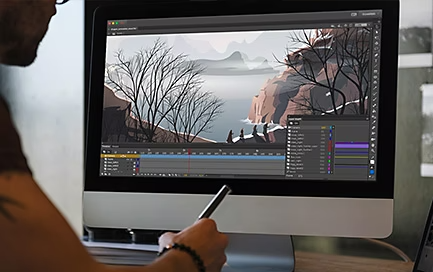3D animation has become a crucial tool in today’s multimedia-driven society, from film and gaming to advertising and education. The desire for a software program is essential for the fulfillment of any 3D animation manufacturing, making it an important selection for creators.
This article offers a thorough guide to navigating the vast terrain of 3D animation tools. One can make an informed judgment if one understands the project’s specific requirements and the main characteristics to consider. This article gives the knowledge to choose the best software for creative endeavors.
Understanding Your Project Needs
Before you begin your 3D animation adventure, you must determine your project’s precise needs. Begin by establishing the project’s goal, target audience, and platform. Are you working on a video game character or a film masterpiece? Examine your financial situation and available resources.
Identifying whether your project necessitates character rigging, physics-based animation, complex modeling, or advanced rendering will allow you to tailor your software selection to your specific needs, ensuring a seamless match between your project’s objectives and the capabilities of your chosen 3D animation software.
Key Features to Consider
Several significant elements should be considered when selecting 3D animation software for your project.
Animation Tools
When assessing 3D animation software, the availability and quality of animation tools are critical considerations. These tools provide various capabilities vital for bringing characters and things to life in your projects. The software’s rigging and character animation skills enhance character expressiveness.
Its support for camera motion and keyframe animation is vital for crafting captivating narratives. Furthermore, regarding 3D animation services, the software’s ability to handle simulation and animation is critical in creating realistic and dynamic motion. It makes it a must-consider when selecting the correct tool for your animation endeavors.
Modeling and Sculpting
Modeling and sculpting skills of 3D animation software are essential. These features enable designers to create complex 3D objects, characters, and environments. Modeling tools allow for creating geometric structures, but sculpting tools allow for the organic molding of surfaces, which is essential for elaborate and detailed designs.
Furthermore, the capability to apply texture mapping and UV unwrapping ensures that the visual aesthetics of your 3D models correspond to your inventive image, active and proactive. To bring your creative thoughts to existence in 3D animation, you ought to understand these modeling and sculpting.
Rendering and Lighting
Rendering and lighting fixtures are critical in developing visually appealing and practical scenes in 3-D animation. Rendering generates the final photograph from the 3D model, which is required for photorealistic effects. Lighting equipment lets you manipulate mild assets to offer depth, atmosphere, and environment on your scene.
Realistic rendering techniques, such as ray tracing and global illumination, as well as the software’s ability to generate and apply shaders and materials for generating certain surface appearances, all contribute to the overall visual impact of your 3D animations and are important considerations.
Special Effects and VFX
Special and visual effects (VFX) play an essential role in the dynamic world of 3D animation. These techniques are vital for generating enthralling sequences, ranging from thunderous explosions in an action film to the subtle fluttering of leaves in an animated forest.
Particle systems are integrated to simulate natural phenomena, fluid dynamics are employed to mimic realistic movement in fabric simulations, and post-production effects are utilized to enhance the final outcome. These effects are used by 3D animation services and by 2D animation services, demonstrating their universal importance in the realm of digital content development.
Compatibility and Integration
When choosing a 3D animation software, compatibility and integration are essential concerns. Working with similar file formats allows seamless cooperation and data interchange across different tools and platforms. Compatibility with third-party plugins, which extends the software’s capabilities and adaptability to diverse project requirements, is also significant.
Furthermore, features that facilitate collaboration and team operations can dramatically boost productivity. It is critical to ensure that your selected software excels in these areas if you want a smooth and efficient 3D animation production process and seamless integration into larger digital content development pipelines.
Finally, deciding on high-quality 3D animation software is a crucial decision to have a significant effect on the achievement of your creative endeavors. You can select a tool that corresponds with your vision by carefully assessing project needs, considering crucial features, and understanding compatibility. Accept continuous learning and adaptation in an ever-changing sector, and confidently set off on your animation adventure, armed with suitable instruments for your artistic expression.

